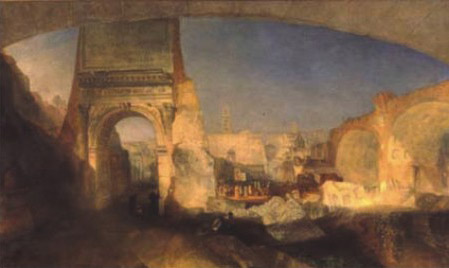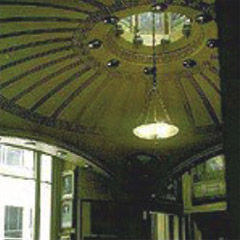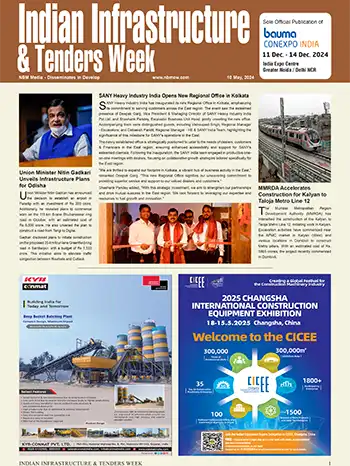Sir John Soane Reflector of Space

Soane is the first architect of his time to engage in a radical reworking of tradition to respond to new circumstances and sensibilities. From banking halls to picture galleries, Soane was challenged to invent new types and forms of building to meet the changing social realities of the industrial age, reports Bhaswati Das.
In 1788, on the death of Sir Robert Taylor, he was appointed architect to the Bank of England. This success proved the starting point of his prosperous career. He was required to enlarge and practically rebuild the entire structure of the bank, a Herculean task which involved many difficulties due to the form and character of the site. The architectural style which he employed i.e. Roman Corinthian of the variety found in the Temple of the Sibyl at Tivoli was a great innovation, and the result has been generally admired. He was knighted in 1831. In 1827, he published 'Designs for Public Improvements in London and Westminster' and, in 1828, 'Designs for Public and Private Buildings'. In 1833, Soane resigned all his appointments and retired from practice. In 1835, he was presented with a set of medals by the architects of England in recognition of his public services.
He died at his house in Lincoln's Inn Fields on 20th January 1837, and was buried in the mausoleum which he had erected for his wife in old St. Pancras' churchyard. The Sir John Soane's Museum, which has been described as the most ingenious domestic architecture in Britain, is an amazing London treasure-house. He bequeathed his house to the nation on the condition that nothing be changed. (Sir John owned Nos. 12, 13, and 14, Lincoln's Inn Fields, and of Late No. 14 was added to the museum space.) Left to the nation, the house is full of architectural illusions and surprises, which showcase Soane's vast collection of antiquities and art.
The Sir John Soane's Museum, which has been described as the most ingenious domestic architecture in Britain, is an amazing London treasure-house. He bequeathed his house to the nation on the condition that nothing be changed. (Sir John owned Nos. 12, 13, and 14, Lincoln's Inn Fields, and of Late No. 14 was added to the museum space.) Left to the nation, the house is full of architectural illusions and surprises, which showcase Soane's vast collection of antiquities and art.
He obviously had enormous fun with his home, having had the means to finance great experiments in perspective and scale and to fill the space with some wonderful pieces. There are also different exhibitions on subjects as broad and as varied as Sir John's interests: from early architecture to more modern art. In the Picture Room, two of Hogarth's Rake's Progress series are among the paintings on panels that swing away to reveal secret gallery pockets with more paintings. All around, mirrors and colors play tricks with light and space, and split-level floors worthy of a fairground fun house disorient you. In a basement chamber, the vast 1300 BC sarcophagus of Scti-1 is placed, lighted by a domed skylight.
Today, Soane's strategies and ideas are recognized as being significant to the work of a number of post-war architects, notably Robert Venturi, Philip Johnson, James Stirling, Arata Isozaki, and Rafael Moneo.
Soane's ability to continue to engage the attention of architects working at the end of the twentieth century is possibly his greatest legacy.
Biography–A peek into the early years
Sir John Soane was born at Whitchurch in Oxfordshire, the son of a mason, in September 1753. His real name was Swan, which he changed, initially to Soan, and later to Soane. He trained as an architect, first under George Dance the Younger, and then Henry Holland. He also studied at the Royal Academy Schools in 1771. In 1772, Soane gained the Royal Academy silver medal with a drawing of the elevation of the Banqueting House at Whitehall. In 1776, he was awarded the gold medal with a design for a triumphal arch, a remarkable composition that also earned for him the travelling studentship. In March 1777, he went for three years to Italy, studying the remains of antiquity and making original designs for public buildings.In 1788, on the death of Sir Robert Taylor, he was appointed architect to the Bank of England. This success proved the starting point of his prosperous career. He was required to enlarge and practically rebuild the entire structure of the bank, a Herculean task which involved many difficulties due to the form and character of the site. The architectural style which he employed i.e. Roman Corinthian of the variety found in the Temple of the Sibyl at Tivoli was a great innovation, and the result has been generally admired. He was knighted in 1831. In 1827, he published 'Designs for Public Improvements in London and Westminster' and, in 1828, 'Designs for Public and Private Buildings'. In 1833, Soane resigned all his appointments and retired from practice. In 1835, he was presented with a set of medals by the architects of England in recognition of his public services.
He died at his house in Lincoln's Inn Fields on 20th January 1837, and was buried in the mausoleum which he had erected for his wife in old St. Pancras' churchyard.
Memorable works
- Aynhoe Park, Aynhoe, Banbury, Oxfordshire
- Bank of England
- Chillington Hall
- Cricket House, Somerset
- Dulwich Picture Gallery
- Moggerhanger House, Bedfordshire
- Piercefield House
- Pitzhanger Manor
- The Royal Hospital, Chelsea
- St John's Church, Bethnal Green
- Holy Trinity Church Marylebone
- Tyringham Hall, Newport Pagnell, Buckinghamshire
- St. Peter's Church, Walworth
- Soane's house in Lincoln's Inn Fields, now a museum
- South Hill Park
- Wimpole Hall, Arrington, Royston, Cambridgeshire
- Wokefield Park
Sir John Soane's Museum–an architectural treasure

He obviously had enormous fun with his home, having had the means to finance great experiments in perspective and scale and to fill the space with some wonderful pieces. There are also different exhibitions on subjects as broad and as varied as Sir John's interests: from early architecture to more modern art. In the Picture Room, two of Hogarth's Rake's Progress series are among the paintings on panels that swing away to reveal secret gallery pockets with more paintings. All around, mirrors and colors play tricks with light and space, and split-level floors worthy of a fairground fun house disorient you. In a basement chamber, the vast 1300 BC sarcophagus of Scti-1 is placed, lighted by a domed skylight.
His Style-Insight into his persona
Soane's buildings were generally well-planned. However, in his later ones the elevations rarely proved satisfactory, being marred by a profusion of ornament often mean and meretricious. He incurred much hostile criticism and ridicule, and a satirical attack upon his 'Baeotian' style. Different types of spaces are encountered. Often within a single room–physical spaces- one can walk through while others were virtual spaces such as the Monk's Cell, the reflected spaces in the mirrors, and the miniature worlds of the architectural models one could neither touch nor enter. The already hybrid and multivalent space, filled with mirrors, ornate and inconsistent decorative schemes, models, and objects of art, offers the spectator either two simultaneous yet incongruent views of the house or a single perspective divided and reproduced as its own reflection.Contemporary Influence –Foot steps on the sands of time
After his death, Soane was hardly appreciated as an architect even though he was universally admired for the eccentricity of his Museum. It was not until the 1920s that his reputation as an architect was revived, entering the arena of Modernist polemics for the first time.Today, Soane's strategies and ideas are recognized as being significant to the work of a number of post-war architects, notably Robert Venturi, Philip Johnson, James Stirling, Arata Isozaki, and Rafael Moneo.
Soane's ability to continue to engage the attention of architects working at the end of the twentieth century is possibly his greatest legacy.













